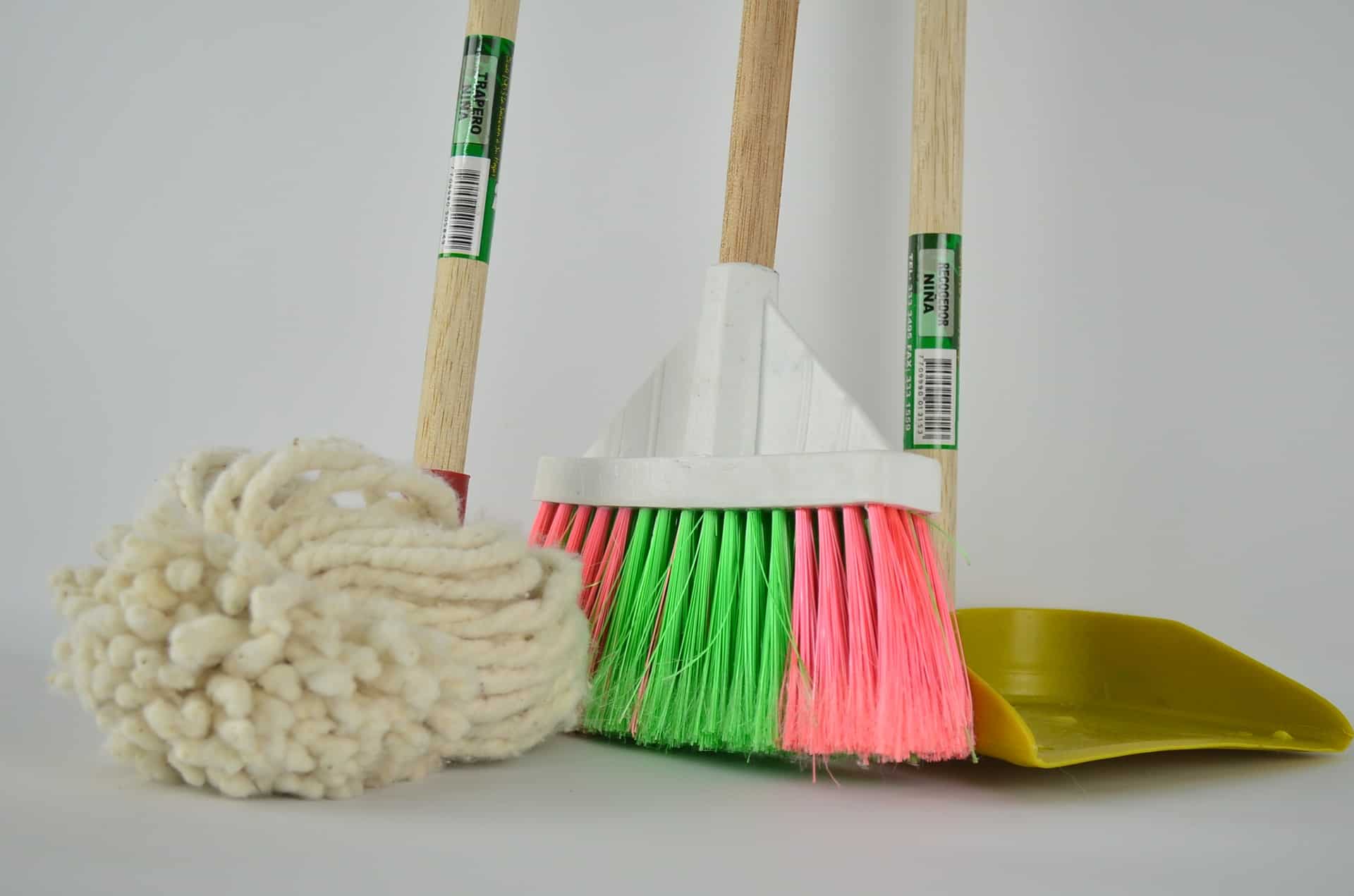No matter where you stand in the old wet mop vs dry mop debate when it comes to cleaning your floors, both methods have their advantages. Learning the difference between both can help you prevent any damages to your floors and keep your house clean.
The name “wet” and “dry” implies the uses of each mop. You mainly use a wet mop with water and a cleaning solution to dissolve and remove gunk, dried off dirt or dust from the floor. Many people use them too to clean liquid spills on restrooms and bathroom floors.
On the other hand, you use dry mops or dust mops to clean dry surfaces. You can still use cleaning solutions in some cases and most often you spray them and let them dry before actually mopping the floor.
The fibers of a dry mop attract dust, dirt, and other residues. A great example of a dry mop is a microfiber mop which is great for cleaning hardwood floors.
Using a Wet Mop
If you don’t know how to properly use a wet mop properly you might actually make your floor dirtier. Wet mops are even great for cleaning vinyl plank floors. The best pair for wet mops are hot water and a cleaning solution. You first need to sweep the floor off excess dust and dirt and then soak it with your wet mop.
- Soak a section of your floor and allow the water to stand for a couple of minutes. The heat, water, and cleaning solution will help with softening and loosen the dirt and gunk on the floor.
- After rinsing the wet mop, remove as much water as possible by wringing it.
- Clean the floor by running the wet mop in a back and forth motion soaking in the dirt and water.
Wet mops are extremely absorbent which is why they are effective at cleaning wet surfaces. By soaking the floor, it softens up the dirt which makes it easier for the wet mop to absorb it and clean the floor.
Using a Dry Mop
Using a dry mop is much easier compared to a wet mop. A dry mop can work both as a broom and a cleaner at the same time. These are some things that you need to keep in mind when mopping with a dry mop:
- The mop head should not leave the floor when doing individual strokes.
- Go back and forth over the floor in a uniform pattern. The stroke can overlap a few inches.
- Lift the mop head and shake it out in the trash can or plastic bag after doing some few strokes.
- When using a spray or cleaning solution, follow the instructions on the product to effectively use it.
- After using the dry mop, you should have a pile of dirt gathered that you can easily scoop up with a broom or dustpan.
Can You Wet a Dust Mop?
You may only want to wet a dust mop if you are cleaning it. Dry or dust mops will accumulate dust over time so there will come a time when you have to wash it. It would be best to hand wash your dry mop.
- Fill a bucket with enough warm water. Add some laundry detergent and mix.
- Remove the dry mop head from the frame. There are different methods to do it depending on the dry mop type so you should always check with the manufacturers on how to properly do it.
- Place the dry mop in the bucket of warm water and allow it to soak for at least an hour.
- Rinse the dust mop thoroughly with warm water and hang it outdoors to dry.
Conclusion
Wet and dry mops are different in terms of the basic application. While both have their own respective uses, they do an excellent job. Learning how to best use them can help you save your floors from any damage and keep your home clean for a long time.

